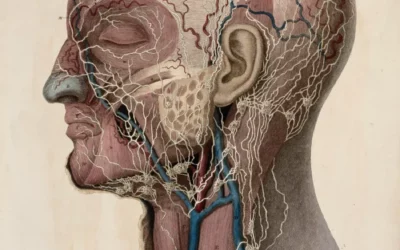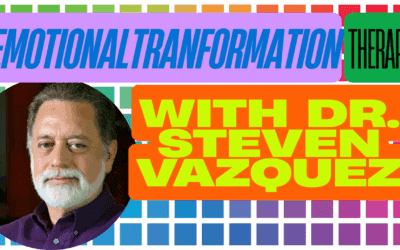What is Positive Psychotherapy?
Positive Psychotherapy (PPT) is a strengths-based approach to psychotherapy that integrates positive psychology principles and research-supported interventions to promote wellbeing, resilience, and optimal functioning. Rather than primarily focusing on psychopathology, PPT emphasizes the development of positive emotions, character strengths, meaning, and healthy relationships.
Is Positive Psychotherapy Evidence-Based?
PPT is grounded in the empirical findings of positive psychology, which has amassed a substantial body of research on the factors that contribute to human flourishing. Numerous studies support the efficacy of positive psychology interventions for enhancing wellbeing and reducing symptoms of depression, anxiety, and stress. However, as an integrative psychotherapy model, PPT itself warrants further direct empirical validation.
Core Assumptions and Tenets of Positive Psychotherapy
- Psychopathology and wellbeing are separate continua, not opposites on a single dimension
- Positive emotions, engagement, relationships, meaning, and achievement are key pathways to wellbeing
- Character strengths are universal traits that can be identified and developed in anyone
- Positive experiences, emotions, and traits can buffer against mental illness and promote resilience
- A balanced therapeutic focus on suffering and flourishing is most effective for enacting change
Origins and Development of Positive Psychotherapy
PPT was developed by Tayyab Rashid and Martin Seligman, two leading figures in the positive psychology movement. Seligman, often regarded as the founder of positive psychology, had previously done pioneering research on learned helplessness, attributional styles, and optimism. His 2002 book “Authentic Happiness” articulated a vision for a psychology of positive human functioning.
Rashid, a clinical psychologist, had been applying positive psychology principles in his psychotherapy practice. In 2008, Rashid and Seligman published “Positive Psychotherapy” in a seminal chapter outlining PPT as a comprehensive therapeutic approach. This model drew on the earlier contributions of humanistic-existential psychology, as well as the emerging science of wellbeing, character strengths, resilience, and the broaden-and-build theory of positive emotions.
Cultural and Economic Context of PPT’s Emergence
PPT arose amidst growing disillusionment with the limitations of the disease model of mental health and the restrictive focus on pathology. The advent of managed healthcare and briefer therapies created a need for resource-efficient approaches that could enhance wellbeing and resilience. Culturally, a shift towards happiness, self-actualization, and the search for meaning in the postmodern era fueled interest in positive psychology.
The emergence of PPT also reflected broader socioeconomic trends towards emphasizing individual strengths, assets, and human capital. The changing landscape of work and rise of the service and knowledge economy placed a premium on positive psychological capacities like creativity, social skills, and flexibility.
Integration and Influence in the Field of Psychotherapy
PPT shares theoretical underpinnings and common factors with established therapies like:
- Humanistic-Existential Therapy
- Rogerian Person-Centered Therapy
- Solution-Focused Brief Therapy
- Strengths-Based Counseling
- Narrative Therapy
- Acceptance and Commitment Therapy
As an integrative framework, PPT has incorporated elements of these approaches while also offering a unifying structure grounded in positive psychology research. PPT has influenced the field by expanding the scope of treatment targets, shifting towards a balanced focus on wellbeing and psychopathology. It has contributed to the growth of positive clinical psychology as a specialty.
Timeline of Positive Psychotherapy
- Late 1990s – Seligman and Csikszentmihalyi coin term “positive psychology”
- 2000s – Positive psychology research on emotions, traits, meaning, and institutions expands
- 2002 – Seligman’s “Authentic Happiness” published
- 2004 – Seligman and Peterson’s “Character Strengths and Virtues” published
- 2006 – First positive psychology courses for therapists offered
- 2008 – Rashid and Seligman’s seminal chapter on PPT published
- 2010s – PPT manualized, research and training expand internationally
- 2018 – Rashid’s “Positive Psychotherapy Clinic Manual” published
PPT’s Perspective on Trauma, the Unconscious, and the Self
In PPT, trauma is viewed through the lens of posttraumatic growth – the positive psychological changes that can occur through the struggle with highly challenging circumstances. PPT does not discount the adverse impacts of trauma, but focuses on mobilizing strengths to reframe and transform the experience. The unconscious is not a major focus, as PPT emphasizes building conscious competencies. The self is conceived as a dynamic interplay of positive traits, relationships, and institutions that can be developed through deliberate practice.
Key Interventions and Techniques in PPT
- Strengths-Spotting – Identifying and appreciating character strengths in self and others
- Strengths-Deploying – Intentionally using strengths in new and creative ways
- Three Good Things – Journaling daily positive experiences and gratitude
- Positive Introductions – Crafting personal identity narratives around strengths and best-self
- Active Constructive Responding – Enthusiastically supporting others’ successes
- Hope Map – Envisioning goals, pathways, and agency for a positive future
- Family Strengths Tree – Recognizing multi-generational resources and resilience
- Positive Portfolio – Compiling and showcasing accomplishments and aspirations
Stages and Goals of Therapy in PPT
- Exploration – Building rapport, assessing strengths/resources alongside symptoms/deficits
- Affirmation – Developing balanced conceptualization, reframing problems through strengths lens
- Breaking Through – Experimenting with positive psychology interventions, building positive emotions, relationships, and meaning
- Consolidation – Evaluating progress, instilling self-efficacy, attributing gains to strengths
- Maintenance – Anticipating setbacks, practicing strengths-deploying, pursuing authentic goals
The overarching aim of PPT is to enhance wellbeing by building positive resources and capacities, without neglecting the need to alleviate distress and dysfunction. Clients develop a strengths-based mindset and skill-set for actualizing their potential and leading a fulfilling life.
Unique Contributions and Applications
PPT offers an empirically-grounded framework and toolkit for implementing positive psychology interventions in clinical contexts. It provides a coherent rationale and structure for integrating a focus on the positive into mainstream psychotherapy practice. PPT techniques can be used transdiagnostically to enhance traditional treatments for depression, anxiety, trauma, and other disorders. Therapists can flexibly draw on PPT as an adjunct or primary treatment approach.
Further Reading and Resources
Rashid, T., & Seligman, M. P. (2018). Positive psychotherapy: Clinician manual. Oxford University Press.
Rashid, T., & Seligman, M. (2008). Positive Psychotherapy. In: Corsini, R., & Wedding, D. (Eds.) Current Psychotherapies (pp. 461-498).
Peterson, C., & Seligman, M. E. P. (2004). Character strengths and virtues: A handbook and classification. New York: Oxford University Press.
Seligman, M. E., Rashid, T., & Parks, A. C. (2006). Positive psychotherapy. American psychologist, 61(8), 774.
Rashid, T. (2015). Positive psychotherapy: A strength-based approach. The Journal of Positive Psychology, 10(1), 25-40.


























0 Comments